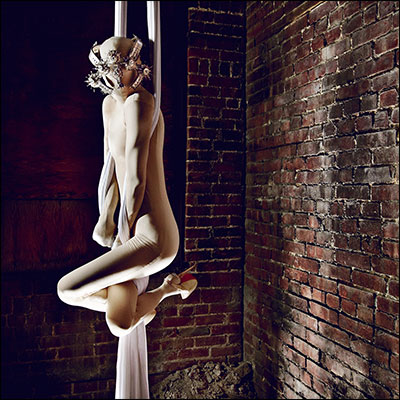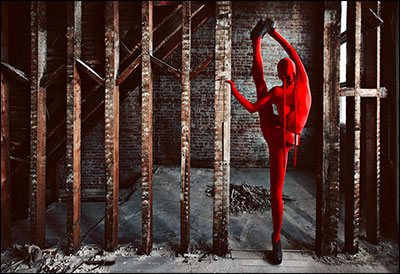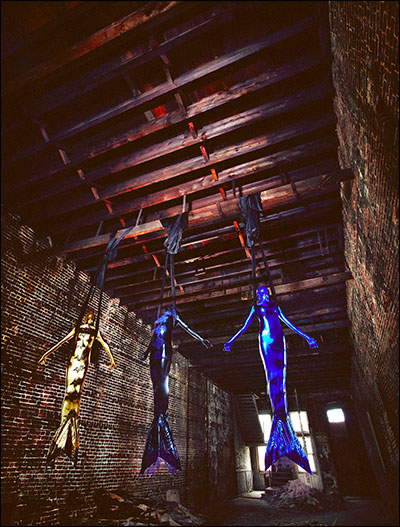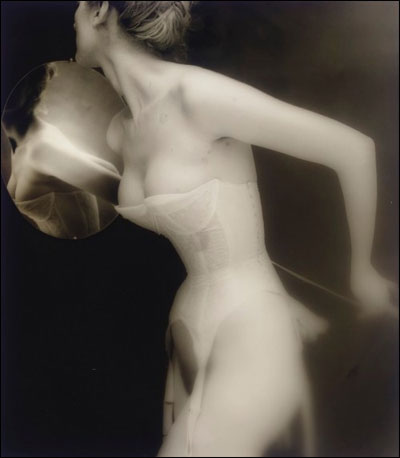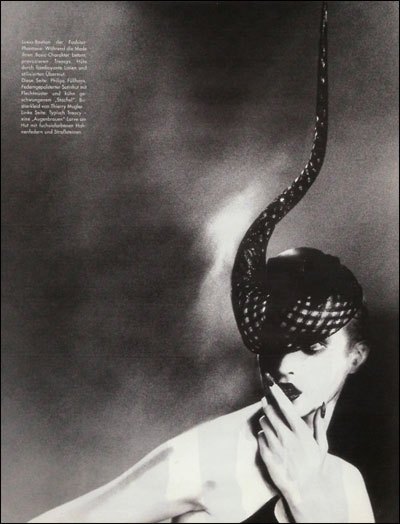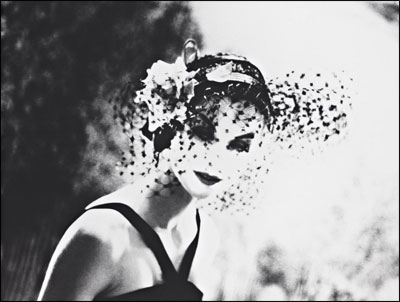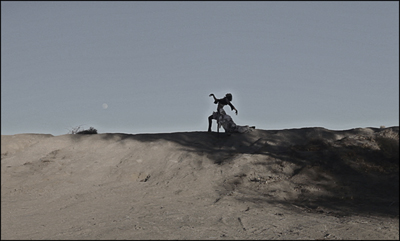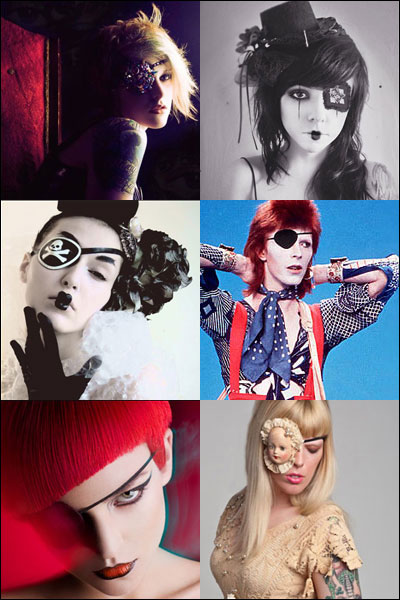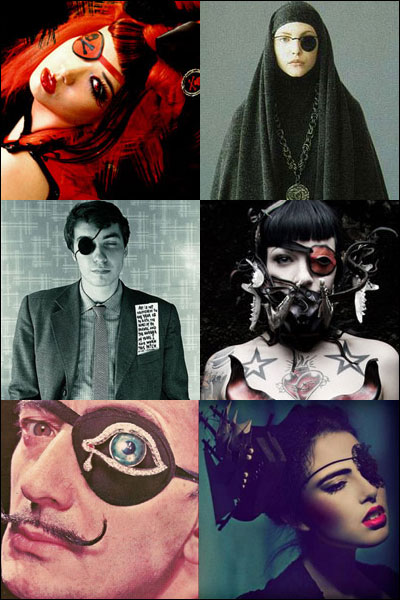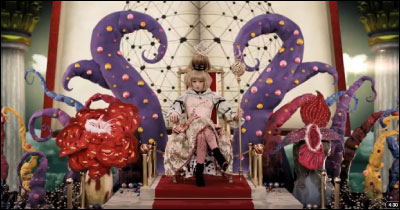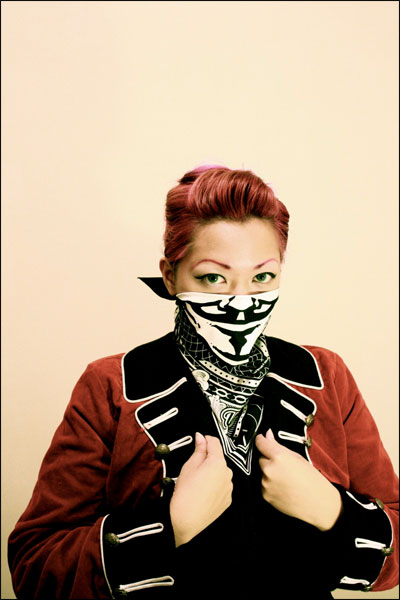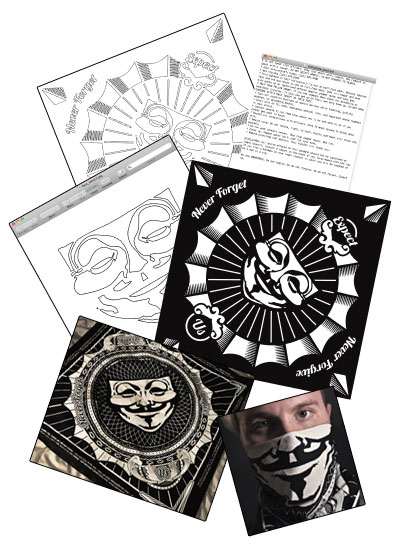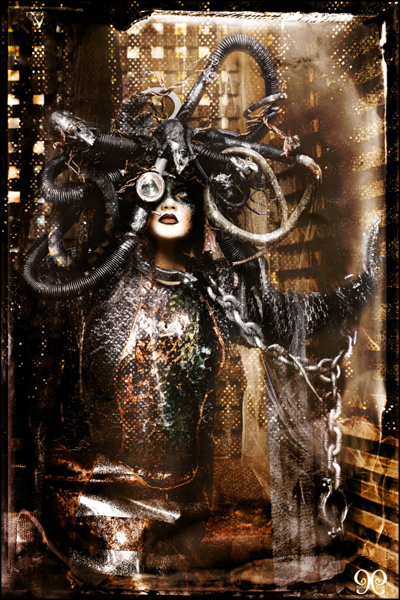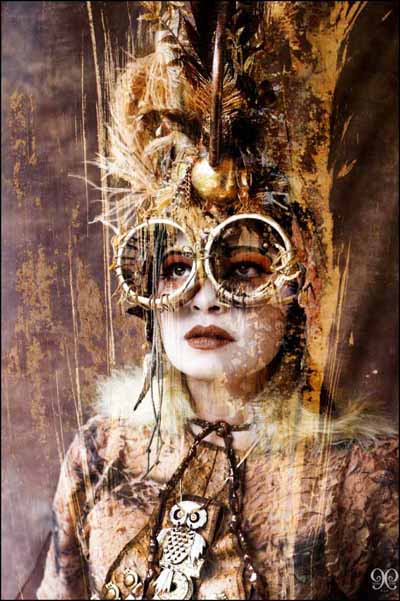
Eiko Ishioka, Motoko Narsue, Kyoko Inui, poster 1979. Photographed by Kazumi Kurigami.
One of the world’s greatest costume designers, Eiko Ishioka, died today at age 73. Ishioka’s work spanned genres and continents; she is best known for her costume design on Dracula, The Fall and The Cell, as well as her collaborations with Bjork, Grace Jones and Cirque du Soleil. From the New York Times:
Ms. Ishioka won an Academy Award for costume design in 1992 for “Bram Stoker’s ‘Dracula,’ ” directed by Francis Ford Coppola. Her outfits for the film included a suit of full body armor for the title character (played by Gary Oldman), whose glistening red color and all-over corrugation made it look like exposed musculature, and a voluminous wedding dress worn by the actress Sadie Frost, with a stiff, round, aggressive lace collar inspired by the ruffs of frill-necked lizards.
These typified Ms. Ishioka’s aesthetic. A deliberate marriage of East and West — she had lived in Manhattan for many years — it simultaneously embraced the gothic, the otherworldly, the dramatic and the unsettling and was suffused with a powerful, dark eroticism. Her work, whose outsize stylization dazzled some critics and discomforted others, was provocative in every possible sense of the word, and it was meant to be.
Ms. Ishioka was closely associated with the director Tarsem Singh, for whom she designed costumes for four films. In the first, “The Cell” (2000), she encased Jennifer Lopez, who plays a psychologist trapped by a serial killer, in a headpiece that resembled a cross between a rigid neck brace and a forbidding bird cage.
“Jennifer asked me if I could make it more comfortable,” Ms. Ishioka told The Ottawa Citizen in 2000, “but I said, ‘No, you’re supposed to be tortured.’ ”
Eiko Ishioka worked until the very end of her life. Her latest works can be seen in Tarsem Signh’s Immortals (2011) and Mirror Mirror (2012). After the cut, more images of Ishioka’s work throughout the ages, as well as recent video of her talking about her work on Immortals.
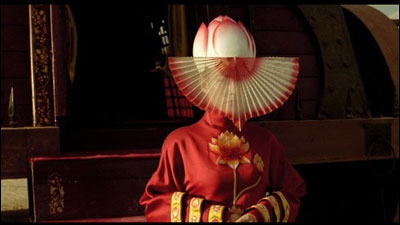
Costume design from The Fall

Costume design from The Cell
